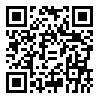<>
Volume 5, Issue 2 (Journal of Language Teaching, Literature & Linguistics (JLTLL) 2022)
JSAL 2022, 5(2): 135-167 |
Back to browse issues page
Download citation:
BibTeX | RIS | EndNote | Medlars | ProCite | Reference Manager | RefWorks
Send citation to:



BibTeX | RIS | EndNote | Medlars | ProCite | Reference Manager | RefWorks
Send citation to:
Hatami F, Rahbar B, Taheri Oskooi M, Vaezi H, Amir Arjamandi S N. (2022). Multi-semantic evaluation of the action verb "to eat" in Kalhori Kurdish dialect based on cognitive semantics [In Persian]. JSAL. 5(2), 135-167.
URL: http://jsal.ierf.ir/article-1-70-en.html
URL: http://jsal.ierf.ir/article-1-70-en.html
Fatemeh Hatami1, Behzad Rahbar *2, Marjan Taheri Oskooi3, Hengameh Vaezi4, Seyedeh Nazanin Amir Arjamandi3
1- PhD student in Linguistics, Islamic Azad University, Takestan Branch, Qazvin, Iran
2- Assistant Professor of Linguistics, Allameh Tabatabai University, Tehran, Iran ,behzadrahbar@atu.ac.ir
3- Assistant Professor, Department of Linguistics, Islamic Azad University, Takestan Branch, Qazvin, Iran
4- Assistant Professor of Linguistics, Islamic Azad University, Rasht Branch, Rasht, Iran
2- Assistant Professor of Linguistics, Allameh Tabatabai University, Tehran, Iran ,
3- Assistant Professor, Department of Linguistics, Islamic Azad University, Takestan Branch, Qazvin, Iran
4- Assistant Professor of Linguistics, Islamic Azad University, Rasht Branch, Rasht, Iran
Abstract: (2559 Views)
One of the most well-known ideas in semantic studies is polysemy, which is defined as the situation in which a single language element has several interpretations. The constructivist method is well-known for giving specific emphasis to conceptual links at the vocabulary level. Homonymy is compared to polysemy for analysis. According to the constructivist perspective, polysemy is an unintended result of the presence of words. A word's potential meanings are thought to be limitless and unexpected. In the current article, a cognitive semantics method is used to examine the several meanings of the verb "to eat" (/xwârdn/ as an action verb in the Kurdish dialect of Kolhori). Field libraries have been used to collect the data. Common phrases, proverbs, and Kurdish poets' works all made up the language corpus employed in this study. Forty-two meanings of the verb "to eat" were identified by analyzing the data using cognitive semantics concepts; one of these meanings was the main meaning of "swallowing something through the mouth," and 41 of its marginal meanings were categorized into seven main groups, showing a close semantic relationship between the meaning of the head of each group and the marginal members: First, there are those who "desire," second, there are those who "take place," third, there are those who "are efficient," fourth, there are those who "predict fate," fifth, there are those who "do injustice," and sixth, there are those who "do something right." The sixth group is "giving," followed by "entertaining." The semantic network of Kolhori Kurdish may be examined to see how the similarity of a verb's fundamental components affects how it is understood. In certain cases, the existence of a word that is similar to many verbs might signify the same thing. As a result, the semantic network relationships between the verbs in Kolhori Kurdish and their context-related associate words lead to the transmission of meaning.
Type of Study: Research |
Subject:
Discourse Analysis
Received: 2020/11/10 | Accepted: 2021/02/8 | Published: 2021/03/15
Received: 2020/11/10 | Accepted: 2021/02/8 | Published: 2021/03/15
Send email to the article author
| Rights and permissions | |
 |
This work is licensed under a Creative Commons Attribution-NonCommercial 4.0 International License. |






